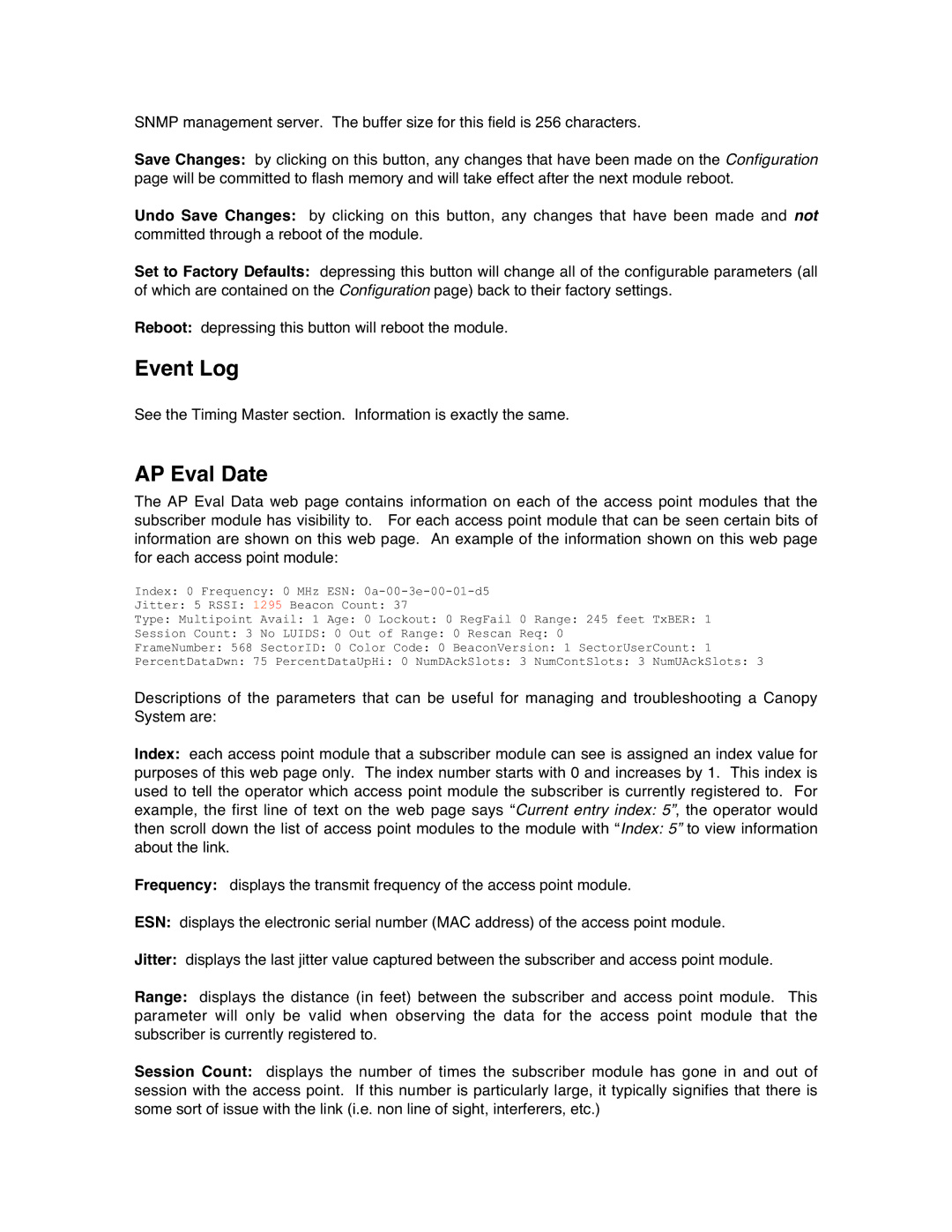SNMP management server. The buffer size for this field is 256 characters.
Save Changes: by clicking on this button, any changes that have been made on the Configuration page will be committed to flash memory and will take effect after the next module reboot.
Undo Save Changes: by clicking on this button, any changes that have been made and not committed through a reboot of the module.
Set to Factory Defaults: depressing this button will change all of the configurable parameters (all of which are contained on the Configuration page) back to their factory settings.
Reboot: depressing this button will reboot the module.
Event Log
See the Timing Master section. Information is exactly the same.
AP Eval Date
The AP Eval Data web page contains information on each of the access point modules that the subscriber module has visibility to. For each access point module that can be seen certain bits of information are shown on this web page. An example of the information shown on this web page for each access point module:
Index: 0 Frequency: 0 MHz ESN:
Jitter: 5 RSSI: 1295 Beacon Count: 37
Type: Multipoint Avail: 1 Age: 0 Lockout: 0 RegFail 0 Range: 245 feet TxBER: 1
Session Count: 3 No LUIDS: 0 Out of Range: 0 Rescan Req: 0
FrameNumber: 568 SectorID: 0 Color Code: 0 BeaconVersion: 1 SectorUserCount: 1
PercentDataDwn: 75 PercentDataUpHi: 0 NumDAckSlots: 3 NumContSlots: 3 NumUAckSlots: 3
Descriptions of the parameters that can be useful for managing and troubleshooting a Canopy System are:
Index: each access point module that a subscriber module can see is assigned an index value for purposes of this web page only. The index number starts with 0 and increases by 1. This index is used to tell the operator which access point module the subscriber is currently registered to. For example, the first line of text on the web page says “Current entry index: 5”, the operator would then scroll down the list of access point modules to the module with “Index: 5” to view information about the link.
Frequency: displays the transmit frequency of the access point module.
ESN: displays the electronic serial number (MAC address) of the access point module.
Jitter: displays the last jitter value captured between the subscriber and access point module.
Range: displays the distance (in feet) between the subscriber and access point module. This parameter will only be valid when observing the data for the access point module that the subscriber is currently registered to.
Session Count: displays the number of times the subscriber module has gone in and out of session with the access point. If this number is particularly large, it typically signifies that there is some sort of issue with the link (i.e. non line of sight, interferers, etc.)
